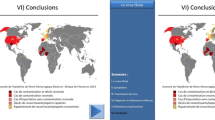Abstract
In the recent times, many computer vision supported e-learning applications have been constructed, to provide the participants with the automated and real-time camera control capabilities. In this paper, we describe a portable and single-PC based instructional video capture system, which incorporates a variety of computer vision techniques for its video directing and close-up region specification. We describe the technologies used, including the laser-pointer detections, instructor’s lip tracking and individual teaching object recognition. As the same time, we also explain how we have achieved both low-cost and portability property in our design.
Preview
Unable to display preview. Download preview PDF.
Similar content being viewed by others
References
Shimada, A., Suganuma, A., Taniguchi, R.: Automatic Camera Control System for a Distant Lecture Based on Estimation of Teacher’s Behavior. In: International Conference on Computers and Advanced Technology in Education (2004)
Ozeki, M., Nakamura, Y., Ohta, Y.: Automated camerawork for capturing desktop presentations - camerawork design and evaluation in virtual and real scenes. In: 1st European Conference on Visual Media Production (CVMP) (2004)
Bianchi, M.: Automatic video production of lectures using an intelligent and aware environment. In: 3rd international conference on Mobile and ubiquitous multimedia, College Park, Maryland (2004)
Xu, R.Y.D., Jin, J.S.: Adapting Computer Vision Algorithms to Real-time Peer-to-Peer E-learning: Review, Issues and Solutions. In: World Conference on E-Learning in Corporate, Government, Healthcare, and Higher Education, Vancouver, Canada (to appear, 2005)
Xu, R.Y.D., Jin, J.S.: Individual Object Interaction for Camera Control and Multimedia Synchronization. In: 31st IEEE International Conference on Acoustics, Speech, and Signal Processing (ICASSP 2006), Toulouse, France (to appear, 2006)
Lowe, D.: Distinctive image features from scale invariant key points. International Journal of Computer Vision 60, 91–110 (2004)
Olsen, D.R., Nielsen, T.: Laser pointer interaction. In: Proceedings of the SIGCHI conference on Human factors in computing systems, Seattle, Washington, United States (2001)
Eckert, R.R., Moore, J.A.: The classroom of the 21st century: The interactive learning wall 32, 33–40 (2000)
Oh, J., Stuerzlinger, W.: Laser pointers as collaborative pointing devices. Graphics Interface 2002 (2002)
Olsen, D.: A design tool for camera-based interaction. In: Proceedings of the SIGCHI conference on Human factors in computing systems (CHI 2003) (2003)
Shi, Y., Xie, W., Xu, G., Shi, R., Chen, E., Mao, Y., Liu, F.: The Smart Classroom: Merging Technologies for Seamless Tele-Education. Pervasive Computing 2, 47–55 (2003)
Ahlborn, B.A., Thompson, D.C., Kreylos, O., Hamann, B., Staadt, O.G.: A practical system for laser pointer interaction on large displays. In: ACM Symposium on Virtual Reality Software and Technology (VRST 2005) (2005)
Hart, P.E., Stork, D.G.: Pattern Classification. Wiley, Chichester (2001)
Viola, P., Jones, M.: Rapid object detection using a boosted cascade of simple features. In: CVPR 2001 (2001)
Cheng, K., Takatsuka, M.: Real-time Monocular Tracking of View Frustum for Large Screen Human-Computer Interaction. In: Twenty-Eighth Australasian Computer Science Conference (ACSC 2005), Newcastle, Australia (2005)
Comaniciu, D., Ramesh, V., Meer, P.: Kernel-Based Object Tracking. IEEE Trans. Pattern Analysis and Machine Intelligence 25, 564–575 (2003)
Author information
Authors and Affiliations
Editor information
Editors and Affiliations
Rights and permissions
Copyright information
© 2006 Springer-Verlag Berlin Heidelberg
About this paper
Cite this paper
Xu, R.Y.D. (2006). A Portable and Low-Cost E-Learning Video Capture System. In: Blanc-Talon, J., Philips, W., Popescu, D., Scheunders, P. (eds) Advanced Concepts for Intelligent Vision Systems. ACIVS 2006. Lecture Notes in Computer Science, vol 4179. Springer, Berlin, Heidelberg. https://doi.org/10.1007/11864349_99
Download citation
DOI: https://doi.org/10.1007/11864349_99
Publisher Name: Springer, Berlin, Heidelberg
Print ISBN: 978-3-540-44630-9
Online ISBN: 978-3-540-44632-3
eBook Packages: Computer ScienceComputer Science (R0)




